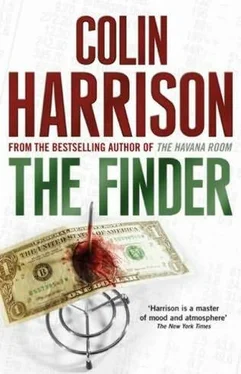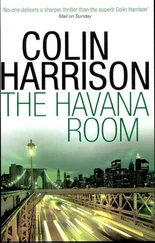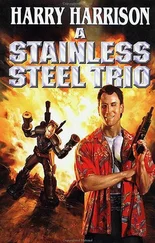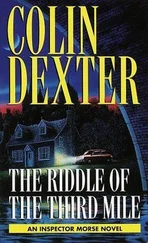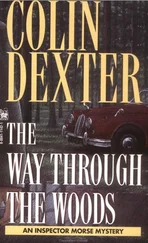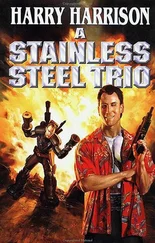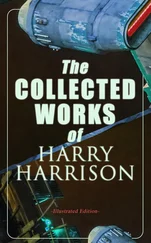Colin Harrison - The Finder
Здесь есть возможность читать онлайн «Colin Harrison - The Finder» весь текст электронной книги совершенно бесплатно (целиком полную версию без сокращений). В некоторых случаях можно слушать аудио, скачать через торрент в формате fb2 и присутствует краткое содержание. Жанр: Триллер, на английском языке. Описание произведения, (предисловие) а так же отзывы посетителей доступны на портале библиотеки ЛибКат.
- Название:The Finder
- Автор:
- Жанр:
- Год:неизвестен
- ISBN:нет данных
- Рейтинг книги:4 / 5. Голосов: 1
-
Избранное:Добавить в избранное
- Отзывы:
-
Ваша оценка:
- 80
- 1
- 2
- 3
- 4
- 5
The Finder: краткое содержание, описание и аннотация
Предлагаем к чтению аннотацию, описание, краткое содержание или предисловие (зависит от того, что написал сам автор книги «The Finder»). Если вы не нашли необходимую информацию о книге — напишите в комментариях, мы постараемся отыскать её.
The Finder — читать онлайн бесплатно полную книгу (весь текст) целиком
Ниже представлен текст книги, разбитый по страницам. Система сохранения места последней прочитанной страницы, позволяет с удобством читать онлайн бесплатно книгу «The Finder», без необходимости каждый раз заново искать на чём Вы остановились. Поставьте закладку, и сможете в любой момент перейти на страницу, на которой закончили чтение.
Интервал:
Закладка:
Phelps came and stood before Chen, with his hand out.
"You will now surrender your cell phones and electronic devices and so on."
Chen gave him two phones and a beeper.
"Please remain comfortable," Martz said. He got up to go see Elliot on the other side of the terrace.
"Everything okay?"
"Hi, Billy Martz. Yes, we're set up, more or less. I spent the day at the office getting everything ready." He had three screens open, powered off one of the waterproof exterior plugs that Connie used for her elliptical motion machine that she kept stored on the roof, spending hours climbing a little closer to heaven or wherever it was his wife ultimately planned to arrive.
"You have all your power, all your communications?"
"Yes."
"Is it technically very difficult?"
"This technology has been around for a while now. You want tricky technology, go play around with stem cells."
"If you say so."
"Bill, you're turning into a fussy old man." Elliot smiled, patted him on the back. "You go do your thing and I'll do mine."
But he lingered, looking over all the equipment, amazed at how small it was, except for the large white transmission cone on a ten-foot telescoping tripod that had been hauled in and positioned earlier in the day. The key to a successful lift, Martz knew, now that almost everything electronic was traceable, was to move the communication not just from place to place, and from government jurisdiction to jurisdiction, but across technologies. Moving across each of these boundaries made it harder for any interested authorities to re-create the sequence of illegal communications. From what Martz understood, Elliot's men would, that evening, be communicating directly with a boat about one hundred feet offshore in New York Harbor. The mode was a digitally compressed and encrypted microwave beam, which required line-of-sight transmission and was effective only up to a few miles. Did not travel with the curvature of the earth. It couldn't be used on foggy or rainy nights, either. You shot it at a receiver the size of an umbrella, the beam a quarter inch wide. But it was absolutely untrackable. It was so good Citibank used one to shoot data from its famous headquarters on East Fifty-third Street to its back-office operations facility in Queens, built for that purpose in a line-of-site location on the other side of the East River. He watched the men go about their business. They'd spent hours checking and rechecking the transmission vector. The boat, papered with a Liberian registry, had a phone uplink to a private Dutch satellite network used only by shipping companies, and the data packets were in turn relayed and downlinked to a Greek shipyard that was owned by Elliot. The yard was filled with rusty tankers needing overhaul, but the fiber-optic cables running under and around them were state of the art. With this arrangement, Elliot could speak more or less untraceably to anyone in the world. The many legs of the communication degraded the sound quality and added a little delay, but not too much, perhaps four seconds.
But this was not all that Elliot did, not by any means. After all, anyone with a few million bucks and an antisocial personality could set up an untraceable mix-tech, global com-link. Mr. bin Laden, for example, among other miscreants. Elliot's real value, and the reason he was effectively paid millions of dollars for what amounted to perhaps seven or eight hours of service, was that he made things happen that otherwise could not; he provided capital and the smarts to leverage it to the greatest possible illegal effect. He and his tiny band of infidels had researched several thousand stock price surge patterns and painstakingly built a proprietary trading program that followed the documented natural arc of these surges using best-fit modeling within a field of scattershot data points. He then started to buy the stock in question and drive up the price, of course. But that was not all; once Elliot's trading gambit began, he didn't just slavishly recapitulate the curve with simplistic buying and occasional selling; instead he created it organically, he birthed it, which was to say that he used several thousand linked trading platforms that he empowered with randomizing block-size choosers and let run autonomously, giving the platforms a buy bias but also letting them react in real time and differentially to spontaneous market information. This meant that he allowed some of his trading platforms to make "bad" decisions, very much the way real flesh-and-blood traders did, getting in or out of a market surge too early or late. He also employed a mix of the patterns typically utilized by day traders, retail brokerages, private wealth managers, investment banks, and big institutional players such as pension fund managers and mutual fund companies. His platforms traded not just with and against all the legitimate traders in the market but blindly against each other as well. The result was not a simulation of a real stock surge but a real-life, real-time rise that was, from a statistical point of view, utterly legitimate.
The trick was to induce enough other legitimate traders to buy with sufficient speed and volume that Elliot's platform trades were hidden within the general movement of the stock. He started a little trading fire, hoped it caught, then added gasoline to it. Which was also to say that were the SEC to examine the general trade data, it would be hard-pressed to filter out and reveal Elliot's platforms. It was that sophisticated. Which, again, was also to say he'd probably bought some wee black-market SEC software, when rarely available, and studied it closely.
Elliot had an excellent record. Never exposed or investigated. And he was picky as hell. Had turned Martz down a few times. In general his bias was toward industries or companies that were experiencing a lot of market volatility. Tweaking his model continuously, Elliot stealthily moved around among New York, London, Frankfurt, Paris, Tokyo, Milan, Shanghai, Johannesburg, Melbourne. Each exchange or bourse had its own wrinkles, of course, its own trading rules, national holidays, weather seasons, electoral cycles, and sporting events. Best time to do a British lift? When the World Cup was playing on the same weekend as the Wimbledon finals. Trading volume always light on that summer Friday morning in late June or early July. Best time in Japan? During the Japanese World Series with a typhoon predicted for Tokyo. And so on. The stock had to have a story that made the restoration of its price somewhat plausible. Couldn't be in a dying industry, couldn't be in a takeover battle, for trading patterns around those were heavily scrutinized. Couldn't involve weapons systems, a personal belief of his, and couldn't directly enrich any of a select group of people, including Rupert Murdoch, Donald Rumsfeld, or George Soros. Elliot had a few standards. If necessary, he was able to trade one stock simultaneously across multiple exchanges, his trading patterns customized by location. It made for mind-boggling computer research and programming ability. It also meant that Elliot performed only two or three lifts a year and no more. He didn't want to get caught, after all.
Although he was brought in to work for others, Elliot watched the rising stock price with his own goal in mind, which was to get out gradually before the top was reached. In essence, this concept was paradoxical, because every sell order put downward pressure on the price. The trick was to front-run the market's natural conclusion of the short-term, secular rise in the stock's price. Buy less and sell more simultaneously. By the time the stock had topped, Elliot had sold his shares back into the very same heated demand he had created, booked jaw-dropping short-term profits, and initiated a secondary, obfuscatory buy-and-sell pattern of trading, very often one that maintained an artificially high price that was itself 5 or 10 percent below the stock's high. This rear-guard action often resulted in minor short-term losses that shaved at the major gains yet confirmed and publicly ratified the overall movement of the stock. The whole game could take two or even three days to play out, but the essential gambit would transpire in the next five or six hours.
Читать дальшеИнтервал:
Закладка:
Похожие книги на «The Finder»
Представляем Вашему вниманию похожие книги на «The Finder» списком для выбора. Мы отобрали схожую по названию и смыслу литературу в надежде предоставить читателям больше вариантов отыскать новые, интересные, ещё непрочитанные произведения.
Обсуждение, отзывы о книге «The Finder» и просто собственные мнения читателей. Оставьте ваши комментарии, напишите, что Вы думаете о произведении, его смысле или главных героях. Укажите что конкретно понравилось, а что нет, и почему Вы так считаете.
